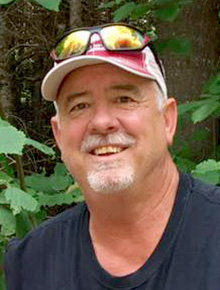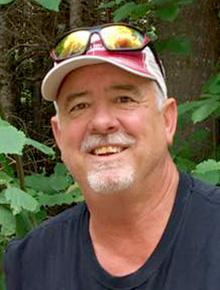
I have been fortunate to be able to hunt upland birds all around the Upper Midwest for about the last 20 years. Many hunters will hunt in some years and skip other years if the bird numbers are not as high as they wished.
There is lots of competition for time in the fall. There is great fishing, bow and gun hunting for deer, and ice angling in the later parts of November and beyond.
I love doing all of those things too, but I have a saying that “if it does not have dogs attached to it, I am way less interested.” With a household of four top-notch Labradors who all love their jobs, I find time with them is my most precious outdoor pastime.
I am able to extend that season by starting in the grasslands of South Dakota chasing prairie grouse in September and hunting quail in Kansas well into the end of January.
Much, if not most, of my hunting is done on some form of public land. My twitter handle is “#habitatchampion”. I have given thousands of volunteer hours to the acquisition and management of public lands over the past 35 years. Public lands hold a huge spot in my heart.
The reason for this is that the average rank-and-file outdoors person does not need thousands of dollars to either lease hunting land or to buy it outright. I have some private land and I still spend most of my hours crisscrossing the plains states in search of public lands wild game.
The state of South Dakota has two areas that are the most popular public lands for hunting prairie grouse. They are the Fort Pierre National Grasslands and the Buffalo Gap National Grasslands.
The former is obviously located near Pierre, South Dakota, and the latter is located adjacent to Kadoka, South Dakota. I hunt in the Buffalo Gap more often because it is farther away from a major airport. Many well-heeled hunters will fly into Pierre and then hunt in a 40-mile radius of that town. The Buffalo Gap is more than 90 miles away and sees far fewer hunters.
In fact, I have hunted the Buffalo Gap for five days many times and have never even seen another hunter. Both of these areas are thousands of acres in size and allow for the fit hunter to walk 20 miles in a day and never hunt the same area twice.
There are two species of prairie grouse. The first and most common is called the Sharptail grouse. The other species is called a Prairie Chicken. Sharptail grouse have the larger overall range of these two species.
These are both hardy birds that can survive the common blizzards the Dakotas are known for. They are primarily west of the Missouri River, but some can be seen and hunted east of that mighty river that cuts South Dakota in half just about right in the middle of that state.
We often do well and sometimes we don’t see or shoot many birds. I have far surpassed the time when killing the most birds was an important measure of whether the hunt was a quality outing or not. When you hunt in areas that are new to you or in periods of the season where the birds have already been hunted for several months, you are often setting yourself up for some challenging conditions.
The reason I hunt in places that might net me fewer birds than I could have harvested had I stayed home is the beauty of different places and the memories of the friends and dogs I spend that time with. You can walk in these National Grasslands and see country that looks much like it did before human settlement.
Once, I spent four days in the sand hills of Nebraska in an area 118,000 acres in size that did not have one single incandescent light bulb or any electrical outlets. The rugged beauty of these short grass prairies is amazing.
On my next trip to the Buffalo Gap, I will have the Badlands of South Dakota as my backdrop. This is certainly a beautiful sight. You do need to do a little extra preparation for these hunts.
All of my dogs have been immunized for possible rattlesnake bites. I also carry a preloaded syringe of prednisone to administer if they get bit to minimize trauma as I head to the vet. Rattlesnake immunizations will most likely save your dog, but they still need to seek the attention of a vet.
Make sure you have the phone numbers of these important contacts in your phone before heading out.
Scott Rall, Worthington, is a habitat conservationist, avid hunting and fishing enthusiast and is president of Nobles County Pheasants Forever. He can be reached at scottarall@gmail.com. or on Twitter @habitat champion.



